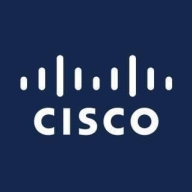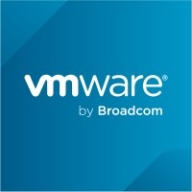

Cisco Umbrella and VMware VeloCloud SD-WAN are prominent players in the network and security solutions category. Cisco Umbrella seems to have the upper hand in security features and seamless integration, while VMware VeloCloud excels in network optimization and ease of deployment.
Features: Cisco Umbrella provides advanced security capabilities including DNS-layer protection, threat intelligence, and web filtering, making it highly valued for seamless deployment and integration with existing systems. VMware VeloCloud offers dynamic network optimization with features such as Dynamic Multipath Optimization and zero-touch provisioning, making it ideal for traffic management.
Room for Improvement: Cisco Umbrella could improve by offering better integration with external threat feeds, granular reporting, and more advanced features like IPS and IDS. Users also desire a more flexible policy scheduling system. VMware VeloCloud could enhance its security features and integration with other security solutions, along with improvements in reporting and scalability.
Ease of Deployment and Customer Service: Cisco Umbrella is praised for its straightforward deployment across cloud environments and excellent technical support, though some users seek faster response times. VMware VeloCloud is noted for its simple deployment through zero-touch provisioning and its good technical support, which could benefit from more personalized interactions.
Pricing and ROI: Cisco Umbrella users find the pricing fair, though they suggest it could be more affordable for SMBs, justifying it with a good ROI due to reduced hardware dependency. VMware VeloCloud is seen as competitively priced yet relatively high compared to traditional vendors, with users desiring more cost-effective scaling options.
Cisco is a big brand in the networking domain, but in security, they are pushing a lot and improving day by day.
From my point of view, the biggest return on investment when using the solution is that it makes it a lot easier to delegate some of the tasks that were traditionally used, such as building policies on the firewalls and doing it through Cisco Umbrella.
The biggest return on investment when using Cisco Umbrella for me is the ease of use of the fact that we've deployed this with our Cisco VPN Secure Client, so every computer has the Umbrella module in it.
The deployment time with VMware VeloCloud SD-WAN saves 50 percent compared to traditional MPLS networks.
I would rate customer support ten out of ten due to the excellent assistance throughout the POC process.
Cisco's support is fantastic, providing assistance when needed, especially during the initial installation process.
If I don't need to go to support all the time, that means the product is working fine, so I'm very happy with them.
I appreciate having dedicated service engineers who manage our account and ensure any technical issues are addressed efficiently.
Cisco Umbrella scales incredibly with the growing needs of my organization.
Cisco Umbrella scales really well with the growing needs of my company, bringing the ability to ensure that people are safe and connected.
Cisco Umbrella scales effectively with the growing needs of my company; it's excellent, and I have experienced no issues.
The customer base for VMware VeloCloud SD-WAN has been growing 30 to 40 percent per year when transitioning from traditional MPLS networks.
I have not experienced any major stability issues with Cisco Umbrella.
Cisco Umbrella Secure Access is pretty stable in my mind, and we have not seen many glitches that would have interrupted services at customer locations.
The stability and reliability of the Cisco Umbrella platform have been great.
The technical team from VMware VeloCloud SD-WAN addresses these issues promptly, making us very happy with their support.
Overall, VMware VeloCloud SD-WAN is a stable solution.
Making it more flexible and easy to deploy, particularly when integrating with other technologies like Active Directory and proxies, would be beneficial.
The product can only shield a small area, making it less effective for larger spaces or multiple users.
I have to write an email to Umbrella support to get assistance, unlike the other products where I can call the Cisco technical assistance center and get an engineer.
I would like to see improved security features, such as adding more SASE functions.
Unlike the comprehensive reports we receive from Palo Alto for our firewalls, VMware VeloCloud SD-WAN doesn't offer detailed reports that effectively convey the solution's benefits to management.
We've bundled that with our firewall stuff and our VPN, which brings the price down and adds the ability to grow.
The only cost associated is the license cost unless additional solutions need to be integrated with Umbrella, which would incur extra costs.
The prices need to be lower as the current pricing is exceedingly high.
The pricing is high, making the margin thin, which limits mark-up opportunities from the wholesale price.
The pricing involves licensing for the VeloCloud gateway based on the bandwidth used.
The DNS layer security provided by Cisco Umbrella is very effective for our security posture, offering us vast improvements in visibility over DNS queries and potential threats.
The most valuable feature of Cisco Umbrella is its DNS security.
The best possible thing is that it is very easy to deploy, easy to configure, and very fast to get onboarded with a customer because this is a cloud-based service.
Its proprietary Dynamic Multipath Optimization (DMP) technology is regarded as the most powerful and valuable function by VMware VeloCloud SD-WAN.
Previously, organizations used MPLS links for 1 MB at around $200, but now they can use 4G or 5G SIM cards for half that price while achieving more bandwidth.
VMware VeloCloud SD-WAN has truly transformed our environment, providing significantly more bandwidth at lower costs, which is essential for tasks like Teams calls.
| Product | Market Share (%) |
|---|---|
| Cisco Umbrella | 23.3% |
| Infoblox Advanced DNS Protection | 16.1% |
| Palo Alto Networks DNS Security | 9.4% |
| Other | 51.199999999999996% |
| Product | Market Share (%) |
|---|---|
| VMware VeloCloud SD-WAN | 9.1% |
| Fortinet FortiGate | 16.9% |
| Cisco Catalyst SD-WAN | 13.8% |
| Other | 60.2% |


| Company Size | Count |
|---|---|
| Small Business | 49 |
| Midsize Enterprise | 30 |
| Large Enterprise | 51 |
| Company Size | Count |
|---|---|
| Small Business | 23 |
| Midsize Enterprise | 14 |
| Large Enterprise | 20 |
Cisco Umbrella delivers rapid DNS security with over 30,000 customers, providing outstanding threat protection and handling more than 600 billion requests daily. It's recognized for high threat efficacy in the SSE domain and integrates elements like SWG, ZTNA, CASB, and more.
Cisco Umbrella is renowned for its effective DNS-layer security against ransomware and phishing. It offers flexible content filtering and integrates seamlessly with existing networks while providing single-pane-of-glass management for centralized monitoring. Its robust threat intelligence and customizable policies are central to its appeal. Users highlight room for improvement in areas like WHOIS data inclusion, malware enhancement, and reporting analytics. Integration with other threat feeds and better client support are requested for more comprehensive coverage.
What are the key features of Cisco Umbrella?
What should users expect in reviews about Cisco Umbrella?
Industries implement Cisco Umbrella primarily for DNS-level security, web filtering, and protecting remote employees. It strengthens cybersecurity frameworks by blocking malware and avoiding access to harmful sites. The tool is widely integrated with Active Directory and Cisco Meraki, providing consistent internet security for employees.
VMware Software-Defined Wide Area Network (SD-WAN) is a secure access service edge (SASE) platform that combines many types of software-based network technologies in an attempt to enable users to virtualize their wide area networks and reduce their reliance on hardware. In essence, this solution makes it possible for users to reliably access their applications from anywhere in the world by leveraging cloud technologies. Users can simply, efficiently, and completely control their network devices and traffic. It ensures that organizations are always able to use the best possible connection to their data centers. VMware SD-WAN steers traffic so that it is always using the most reliable connections and at the same time takes steps to remediate any problems that it detects in other network links. This guarantees that organizations can access high-priority applications at all times.
VMware SD-WAN Benefits
Some of the ways that organizations can benefit by deploying VMware SD-WAN include:
VMware SD-WAN Features
Reviews from Real Users
VMware SD-WAN is a solution that stands out when compared to many of its competitors. Two major advantages it offers are its ability to automate the process of creating and maintaining a virtual local area network and its intuitive user dashboard.
Sami I., principal cloud architect at Loihe, writes, “One of the solution's most valuable features is the VMware core automation stack at an SDDC. It includes NSX, the VMware virtualization layer for the networks (the LAN virtualization), which works extremely well with the VMware SD-WAN solution and is the primary advantage over all the others. None of the other vendors could integrate with the virtual LAN, making it quite complicated and virtualized to be fully automated.”
Chih S., senior technical consultant at a tech services company, says, “The product has a very good user dashboard that is simple to navigate.”
We monitor all Domain Name System (DNS) Security reviews to prevent fraudulent reviews and keep review quality high. We do not post reviews by company employees or direct competitors. We validate each review for authenticity via cross-reference with LinkedIn, and personal follow-up with the reviewer when necessary.